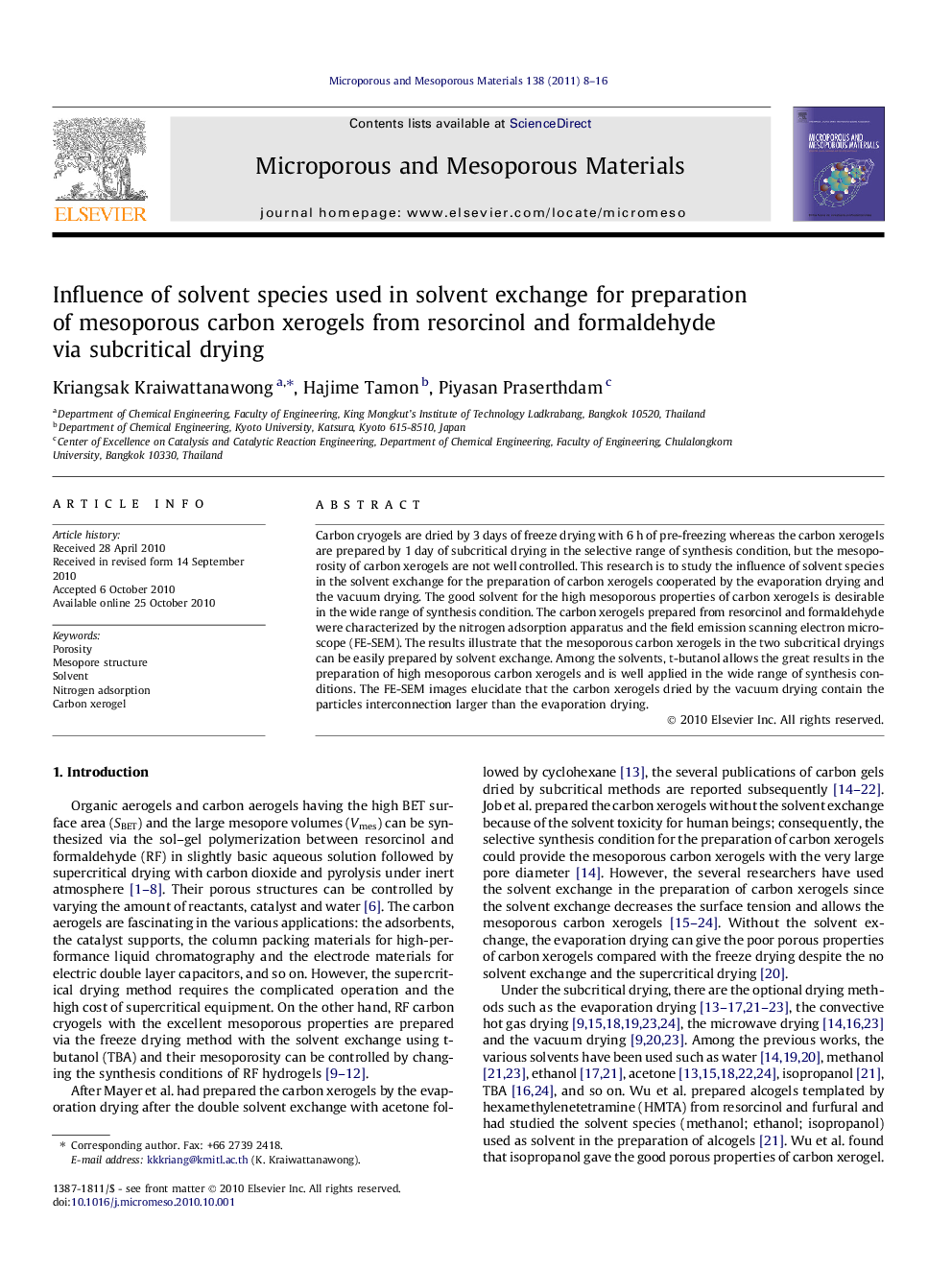| Article ID | Journal | Published Year | Pages | File Type |
|---|---|---|---|---|
| 74809 | Microporous and Mesoporous Materials | 2011 | 9 Pages |
Carbon cryogels are dried by 3 days of freeze drying with 6 h of pre-freezing whereas the carbon xerogels are prepared by 1 day of subcritical drying in the selective range of synthesis condition, but the mesoporosity of carbon xerogels are not well controlled. This research is to study the influence of solvent species in the solvent exchange for the preparation of carbon xerogels cooperated by the evaporation drying and the vacuum drying. The good solvent for the high mesoporous properties of carbon xerogels is desirable in the wide range of synthesis condition. The carbon xerogels prepared from resorcinol and formaldehyde were characterized by the nitrogen adsorption apparatus and the field emission scanning electron microscope (FE-SEM). The results illustrate that the mesoporous carbon xerogels in the two subcritical dryings can be easily prepared by solvent exchange. Among the solvents, t-butanol allows the great results in the preparation of high mesoporous carbon xerogels and is well applied in the wide range of synthesis conditions. The FE-SEM images elucidate that the carbon xerogels dried by the vacuum drying contain the particles interconnection larger than the evaporation drying.
Graphical abstractFigure optionsDownload full-size imageDownload as PowerPoint slideResearch highlights► Vacuum drying prepares carbon xerogels for 24 h shorter than freeze drying. ► The solvent exchange enhances mesoporosity of carbon xerogels. ► Chemical ratios, solvent and drying way determine the porosity of carbon xerogel. ► TBA well reduces the pore shrinkage by vacuum drying and evaporation drying. ► The solvent selection depends on surface tension, vapor pressure and polarity.
